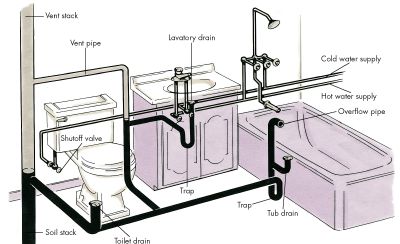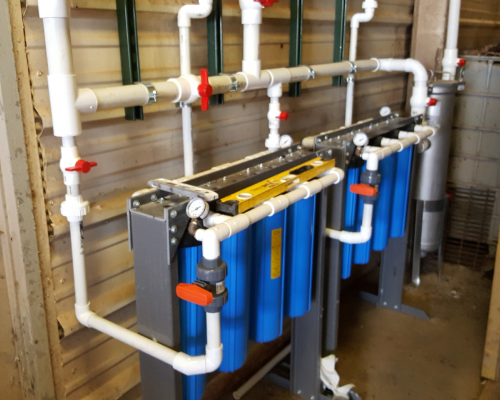What're your opinions on Anatomy of a House: Understanding the Components?

Comprehending how your home's plumbing system functions is necessary for each property owner. From delivering tidy water for alcohol consumption, cooking, and bathing to securely eliminating wastewater, a well-maintained pipes system is vital for your family members's health and wellness and comfort. In this comprehensive overview, we'll explore the detailed network that comprises your home's plumbing and offer ideas on maintenance, upgrades, and handling typical issues.
Intro
Your home's pipes system is more than simply a network of pipes; it's an intricate system that ensures you have accessibility to tidy water and effective wastewater elimination. Understanding its components and exactly how they work together can aid you avoid costly repair services and guarantee every little thing runs smoothly.
Standard Components of a Pipes System
Pipes and Tubes
At the heart of your plumbing system are the pipelines and tubing that bring water throughout your home. These can be made of numerous products such as copper, PVC, or PEX, each with its benefits in regards to resilience and cost-effectiveness.
Components: Sinks, Toilets, Showers, and so on.
Fixtures like sinks, bathrooms, showers, and tubs are where water is utilized in your house. Comprehending just how these fixtures attach to the pipes system helps in detecting problems and planning upgrades.
Shutoffs and Shut-off Factors
Valves regulate the circulation of water in your plumbing system. Shut-off valves are essential throughout emergencies or when you require to make repair work, permitting you to isolate parts of the system without interfering with water flow to the whole house.
Water System
Main Water Line
The primary water line attaches your home to the local water system or an exclusive well. It's where water enters your home and is dispersed to various fixtures.
Water Meter and Pressure Regulator
The water meter measures your water use, while a stress regulator ensures that water flows at a safe pressure throughout your home's plumbing system, protecting against damage to pipes and fixtures.
Cold Water vs. Hot Water Lines
Understanding the distinction between cold water lines, which supply water straight from the primary, and warm water lines, which bring warmed water from the hot water heater, assists in fixing and preparing for upgrades.
Water drainage System
Drain Pipes Piping and Traps
Drain pipelines carry wastewater away from sinks, showers, and toilets to the drain or sewage-disposal tank. Catches stop sewage system gases from entering your home and additionally catch particles that could cause clogs.
Air flow Pipelines
Air flow pipelines permit air right into the water drainage system, protecting against suction that can reduce water drainage and create catches to vacant. Correct air flow is necessary for keeping the stability of your pipes system.
Significance of Appropriate Drain
Making sure appropriate drainage prevents backups and water damages. Consistently cleansing drains pipes and preserving traps can avoid costly fixings and expand the life of your pipes system.
Water Heating Unit
Sorts Of Hot Water Heater
Hot water heater can be tankless or typical tank-style. Tankless heating systems warmth water as needed, while storage tanks keep heated water for immediate use.
Just How Water Heaters Attach to the Plumbing System
Recognizing just how hot water heater link to both the cold water supply and hot water circulation lines aids in identifying concerns like not enough warm water or leaks.
Upkeep Tips for Water Heaters
Frequently flushing your hot water heater to remove debris, inspecting the temperature setups, and examining for leaks can extend its life-span and enhance energy effectiveness.
Common Pipes Issues
Leaks and Their Reasons
Leaks can take place because of maturing pipes, loosened fittings, or high water pressure. Dealing with leakages quickly prevents water damage and mold and mildew growth.
Blockages and Blockages
Blockages in drains pipes and bathrooms are often triggered by flushing non-flushable items or a build-up of grease and hair. Utilizing drainpipe displays and being mindful of what drops your drains pipes can avoid obstructions.
Signs of Plumbing Troubles to Watch For
Low water pressure, slow-moving drains, foul odors, or uncommonly high water costs are signs of prospective pipes troubles that should be attended to promptly.
Plumbing Maintenance Tips
Normal Inspections and Checks
Schedule annual pipes examinations to catch problems early. Try to find indicators of leakages, deterioration, or mineral buildup in faucets and showerheads.
Do It Yourself Upkeep Tasks
Simple jobs like cleaning faucet aerators, looking for commode leaks using dye tablet computers, or shielding subjected pipelines in cold climates can protect against major plumbing problems.
When to Call an Expert Plumber
Know when a plumbing problem calls for professional competence. Trying complicated repair work without proper knowledge can result in even more damages and higher fixing expenses.
Updating Your Pipes System
Factors for Upgrading
Updating to water-efficient components or changing old pipelines can enhance water top quality, minimize water bills, and raise the value of your home.
Modern Pipes Technologies and Their Advantages
Explore innovations like wise leakage detectors, water-saving toilets, and energy-efficient water heaters that can conserve cash and lower ecological influence.
Price Factors To Consider and ROI
Compute the ahead of time prices versus lasting cost savings when thinking about plumbing upgrades. Numerous upgrades pay for themselves via lowered energy expenses and fewer repairs.
Environmental Influence and Conservation
Water-Saving Fixtures and Devices
Mounting low-flow taps, showerheads, and toilets can significantly reduce water usage without sacrificing performance.
Tips for Lowering Water Use
Easy practices like fixing leaks immediately, taking shorter showers, and running full lots of laundry and dishes can preserve water and reduced your energy expenses.
Eco-Friendly Plumbing Options
Consider lasting pipes materials like bamboo for flooring, which is durable and environmentally friendly, or recycled glass for countertops.
Emergency Readiness
Steps to Take During a Pipes Emergency
Know where your shut-off valves are located and just how to shut off the supply of water in case of a burst pipeline or major leak.
Importance of Having Emergency Situation Get In Touches With Useful
Maintain get in touch with information for neighborhood plumbing professionals or emergency solutions readily offered for quick feedback during a plumbing situation.
DIY Emergency Situation Fixes (When Appropriate).
Momentary fixes like making use of air duct tape to patch a dripping pipe or putting a bucket under a trickling faucet can decrease damages until a specialist plumbing gets here.
Final thought.
Recognizing the composition of your home's plumbing system empowers you to keep it successfully, conserving time and money on repairs. By adhering to normal maintenance regimens and staying notified concerning modern pipes technologies, you can guarantee your plumbing system operates successfully for years to find.
HOW YOUR PLUMBING SYSTEM WORKS
Which Pipes Do What?
- Blue lines = fresh water supply entering the building
- Red lines = hot water supply entering the building
- Grey lines = pipes carrying waste away from the building and venting pipes carrying gases away from the building (through the roof)
YOUR MAIN PLUMBING SYSTEMS
There are two main plumbing systems that support your home s basic plumbing needs one that brings clean water into your home, and one that sends dirty water away from your home. Connected to the toilet, bath, shower, and other faucets in your home, these two systems keep your water flowing in the right directions.
ACCESSING FRESH WATER
Fresh and clean water is brought into your home through the main water supply line . Filtered through one pipe, this water is pressured to flow into the various fixtures in your home at any given time.
This water can be sourced from a well located on your property, a pond or river (mostly cottages), or, as in most cases, from the city s municipal water treatment centre. However, it is important to note that water that is untreated, such as the water siphoned from ponds or rivers, may not be safe to drink. Personal water supplies always need to be treated for hardness and contaminants before consumed.
MUNICIPAL WATER SUPPLIES
- Improve taste and odour
- Remove sediment
- Eliminate hardness
- Reduce chlorine
COLD WATER SUPPLY VS. HOT WATER SUPPLY
Cold water flows into your home or building through the service line, which then distributes hot or cold water to your fixtures. This line is most commonly run through a central column that runs floor to floor. Hot water runs in short and straight pipes as the longer the pipeline, the more heat that will be lost in the transfer. Having shorter pipes also allows residents to access hot water more quickly.
WASTE WATER SYSTEM
Your wastewater system is divided into two parts pipes that send wastewater away from your home and venting pipes that send sewer gas away from your home. Sewage water travels through pipes that flush the water and waste towards local sewers that are operated and managed by your city or town. Most sewer systems rely on gravity to move the wastewater to where it needs to go.
The further away from your toilet or sink, the larger wastewater pipes become. This allows for waste to be disposed of from various parts of your home or business at once without pipe blockages. The angle and flow of these pipes are also essential for keeping your waste pipes clear of build up.
https://harrisplumbing.ca/how-your-home-plumbing-system-works/

I have been very fascinated by Exploring Your Homes Plumbing Anatomy and I'm hoping you liked the blog post. Appreciated our entry? Please quickly share it. Let another person locate it. Thank-you for going through it.
Details
Comments on “Key Information About Your House's Plumbing System Anatomy”